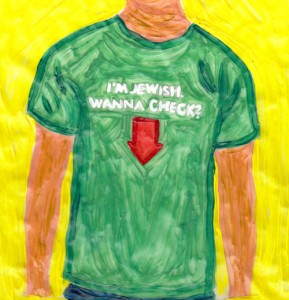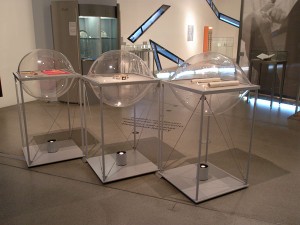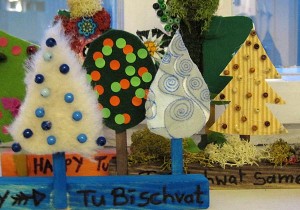 Eric Silverman’s long-awaited Cultural History of Jewish Dress was released last month in Bloomsbury’s prestigious fashion history series (formerly Berg). It brings up to date a subject which has long been in want of revision: Jewish clothing was last surveyed in 1967 – almost fifty years ago – by Alfred Rubens in A History of Jewish Costume. The scope of the book is broad, spanning three thousand years in regions and cultures as distant from one another as the Middle East, Russia, North Africa, Europe, and the USA.
Eric Silverman’s long-awaited Cultural History of Jewish Dress was released last month in Bloomsbury’s prestigious fashion history series (formerly Berg). It brings up to date a subject which has long been in want of revision: Jewish clothing was last surveyed in 1967 – almost fifty years ago – by Alfred Rubens in A History of Jewish Costume. The scope of the book is broad, spanning three thousand years in regions and cultures as distant from one another as the Middle East, Russia, North Africa, Europe, and the USA.
Drawing on the Torah, Mishnah, and Talmud, on a selection of secondary sources and newspaper articles in English, Silverman, a US-American anthropologist, chose an analytical rather than empirical approach. Instead of categorizing garments, he chronicles controversies fought over the ages about what Jews should and should not wear.
→ continue reading
In our permanent exhibition, there is a spot reserved for topics that are au courant: three prominently placed pot-bellied display windows that we call the “raviolis”.

“Ravioli” display windows in the permament exhibition © Jewish Museum Berlin, photo: Christiane Bauer
These display windows were filled once again with new exhibits for Purim, now. The new presentation looks at the festival from a feminist perspective and directs viewers’ attention to the latest developments substantially being shaped by Jewish women in the USA.
The focus of the presentation is on the two female characters of the Purim story that is read aloud at synagogue during the service: Esther and Vashti. Little attention has been paid to the latter for a long time. She was the first wife of the Persian King Ahasuerus, who cast her out because of her disobedience. He subsequently took the beautiful Jew Esther as a wife, who was shy and quiet, quite unlike the defiant Vashti. But over time Esther emerged from her reticence to transform into the courageous heroine we know, thwarting the conspiracy to murder the Persian Jews.
→ continue reading
The significance of holidays isn’t just getting a few days off of work and school.´This holds true as much in Israel as elsewhere. Tu bi-Shevat, the “New Year’s Festival of the Trees,” which falls this year on 26 January, fails to meet the admittedly not always religious criterion of holiday.

From our Tu bi-Shevat workshop for children, 2012 © Jewish Museum Berlin, photo: Nadja Rentzsch
But Israeli children at least have to spend the day in nature, because the custom on Tu bi-Shevat is to make an excursion into the country to plant trees. Most look forward to it; for some, however – and I as a child was included in this latter group – it’s a relief when the cultivation of trees is replaced by some other form of togetherness in the shelter of the classroom.
In fact, in the last fifteen years the tradition of planting that had already been nurtured by the Zionist movement has been increasingly augmented by a new tradition, that of the Tu bi-Shevat seder, whose name alludes to the seder (Hebrew: order) at the beginning of Passover. → continue reading
 Eric Silverman’s long-awaited Cultural History of Jewish Dress was released last month in Bloomsbury’s prestigious fashion history series (formerly Berg). It brings up to date a subject which has long been in want of revision: Jewish clothing was last surveyed in 1967 – almost fifty years ago – by Alfred Rubens in A History of Jewish Costume. The scope of the book is broad, spanning three thousand years in regions and cultures as distant from one another as the Middle East, Russia, North Africa, Europe, and the USA.
Eric Silverman’s long-awaited Cultural History of Jewish Dress was released last month in Bloomsbury’s prestigious fashion history series (formerly Berg). It brings up to date a subject which has long been in want of revision: Jewish clothing was last surveyed in 1967 – almost fifty years ago – by Alfred Rubens in A History of Jewish Costume. The scope of the book is broad, spanning three thousand years in regions and cultures as distant from one another as the Middle East, Russia, North Africa, Europe, and the USA.
